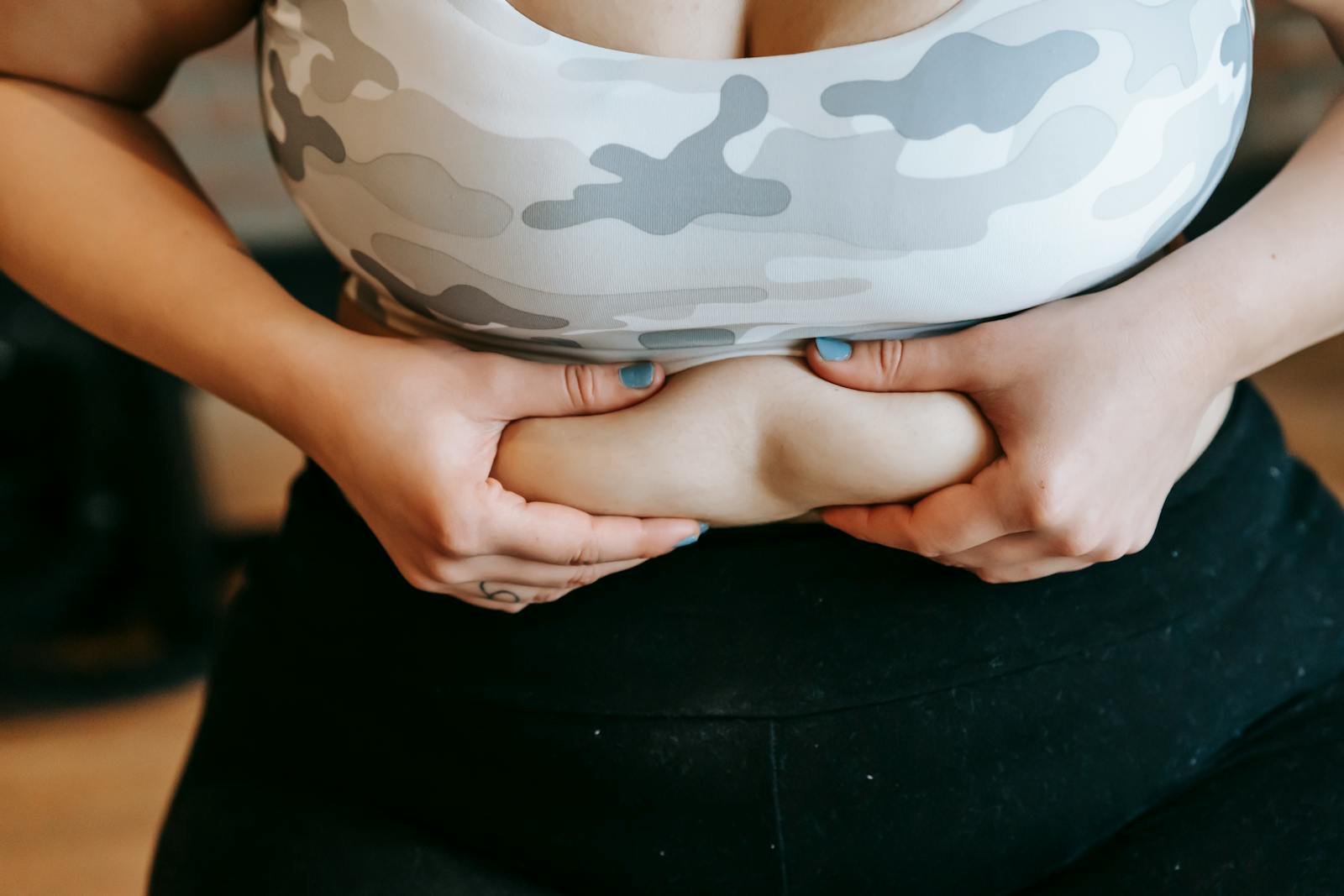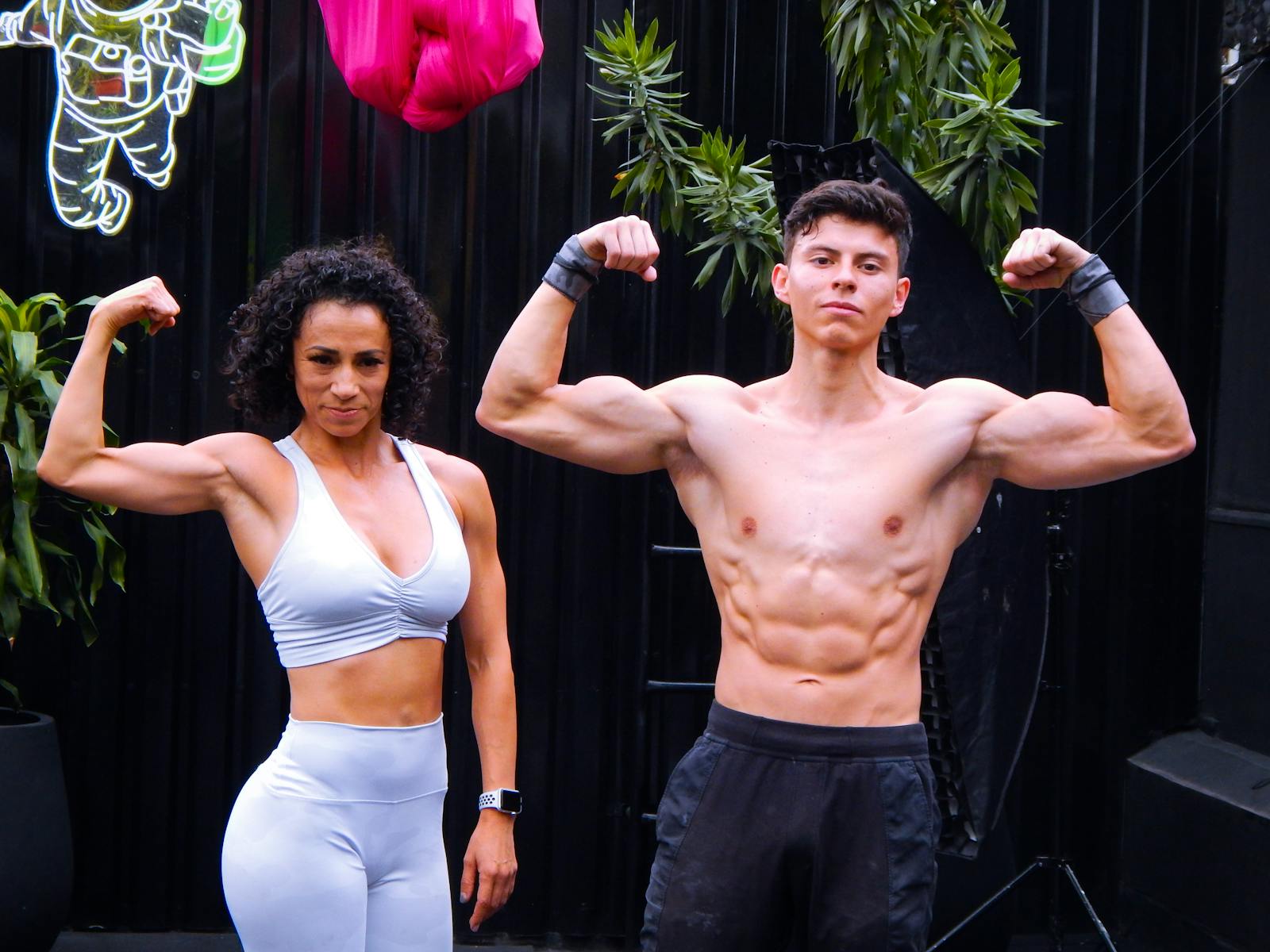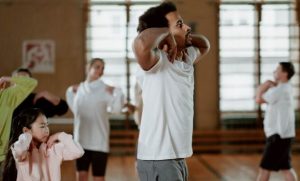
In a world captivated by the allure of sculpted abs workout, it’s no wonder that many of us aspire to achieve that coveted washboard midsection. The importance of well-defined abs goes far beyond mere aesthetics; they are a symbol of dedication, discipline, and the pursuit of a healthier, more confident you. But, before we delve into the nitty-gritty of sculpting those sculpted abs, it’s crucial to dispel a common fitness myth that often leads aspiring fitness enthusiasts astray: the myth of spot reduction.
The Myth of Spot Reduction:
Contrary to what some might believe, doing endless sets of crunches or sit-ups alone won’t miraculously melt away belly fat. The idea that you can selectively burn fat from a specific area of your body with targeted exercises is, unfortunately, a misconception. The human body doesn’t work like that; it adheres to its own fat-burning rules. But, fear not! We’re about to unravel the secrets to achieving sculpted abs by adopting a comprehensive approach—one that takes into account not just exercises but also nutrition, cardiovascular workouts, core strength training, flexibility, and more.
The Comprehensive Approach to Sculpted Abs Workout:

Sculpting those sought-after abs workout is a holistic journey. It’s about understanding how your body works, embracing proper nutrition, and committing to a well-rounded fitness routine. In this ultimate guide to sculpted abs workout, we’ll break down each essential element, providing you with the knowledge and tools needed to embark on this transformative journey.
So, whether your goal is to reveal a six-pack, create a more defined midsection, or simply boost your core strength and stability, join us as we embark on the path to achieving sculpted abs through a comprehensive approach that’s grounded in science, dedication, and the belief that with the right knowledge and commitment, you can attain the sculpted abs you’ve always dreamed of.
Nutrition for Sculpted Abs

The Significance of Diet in Achieving Sculpted Abs
Your journey towards sculpted abs starts in the kitchen. No matter how hard you work in the gym or how many crunches you do, you won’t see those well-defined abs without proper nutrition. In fact, it’s often said that sculpted abs are made in the kitchen, not the gym. This statement underscores the fundamental role of diet in achieving your goal.
Macronutrients and Their Role
Understanding macronutrients—carbohydrates, proteins, and fats—is key to crafting a diet that supports your quest for sculpted abs. Carbohydrates provide energy for your workouts and daily activities, proteins aid in muscle repair and growth, and healthy fats are essential for overall health. Balancing these macronutrients in the right proportions is crucial. We’ll delve deeper into this in our nutrition section, helping you make informed choices about what you eat to fuel your body’s transformation.
The Importance of Hydration
Hydration is often underestimated but plays a vital role in your fitness journey. Proper hydration supports digestion, circulation, and overall health. Dehydration can lead to decreased exercise performance and even hinder fat loss. We’ll explore how to maintain optimal hydration levels, including the role of water and other hydrating beverages in your diet.
Meal Timing and Portion Control
It’s not just about what you eat; when and how much you eat also matter. We’ll discuss the significance of meal timing and portion control in optimizing your metabolism and managing hunger. Learning how to distribute your meals throughout the day and control portion sizes can help you avoid overeating and keep your energy levels stable.
The old saying “you are what you eat” is only half the story; “when and how much you eat” holds equal weight. Meal timing and portion control are the fine-tuned details that can make or break your journey to sculpted abs.
- Balancing Your Meals: Distributing your macronutrients evenly throughout the day helps maintain steady energy levels and promotes efficient metabolism. Instead of the traditional three large meals, consider breaking them into five or six smaller, well-balanced meals. This approach can help prevent energy crashes and overeating.
- Pre-Workout Nutrition: Eating the right foods before your workout can boost your performance and fat-burning potential. Aim for a meal rich in carbohydrates and lean protein about 2-3 hours before your exercise session. This provides your body with the energy it needs for a productive workout.
- Post-Workout Nutrition: After exercising, your body is in prime recovery mode. Consuming a combination of protein and carbohydrates within an hour of your workout can enhance muscle repair and replenish glycogen stores, aiding in quicker recovery and better results.
- Snacking Wisely: Healthy snacks can help stave off hunger and prevent overeating during main meals. Opt for nutrient-dense snacks like Greek yogurt, mixed nuts, or a piece of fruit. Avoid sugary, empty-calorie snacks that can sabotage your progress.
- Portion Control: It’s not just what you eat but how much you eat that matters. Pay attention to portion sizes and avoid mindless eating. Using smaller plates, measuring food, and practicing mindful eating can help you manage portions effectively.
Remember, sculpted abs aren’t built in a day; they’re sculpted meal by meal.
Herbomass
Core Strength Training For Sculpted ABS

The Benefits of Core Strength Training
A strong and well-developed core is the cornerstone of sculpted abs. But core strength training offers benefits that extend far beyond aesthetics. A robust core provides stability and support for everyday movements, enhances athletic performance, and reduces the risk of injury. It’s the powerhouse of your body, connecting your upper and lower body while ensuring proper posture and balance.
Exercises Targeting the Rectus Abdominis
The rectus abdominis, often referred to as the “six-pack” muscle, is the most visible of the abdominal muscles. To sculpt this area effectively, you’ll need to incorporate targeted exercises. Some classic rectus abdominis exercises include:
- Crunches: The quintessential ab exercise, crunches engage the rectus abdominis. Ensure proper form by lifting your upper body using your abdominal muscles, rather than straining your neck or back.
- Leg Raises: Lying on your back and lifting your legs engages the lower portion of the rectus abdominis. You can perform these with straight legs or bent knees to adjust the difficulty level.
- Hanging Leg Raises: Hanging from a pull-up bar and raising your legs engages both your upper and lower rectus abdominis. This exercise requires upper body strength as well.
Exercises for Obliques and Transverse Abdominis to get a sculpted abs
To achieve a well-rounded, sculpted core, don’t forget about your obliques and transverse abdominis. These muscles provide stability and support while adding definition to your waistline. Effective exercises include:
- Russian Twists: Seated on the floor or using a medicine ball, twist your torso to engage the obliques. This exercise also challenges your balance.
- Planks: Planks work not only the rectus abdominis but also the transverse abdominis and obliques. Maintain a straight line from head to heels for optimal results.
- Side Planks: By focusing on one side at a time, side planks target the obliques effectively. Keep your body in a straight line and engage your core.
Proper Form and Technique
Regardless of the exercises you choose, proper form and technique are paramount. Incorrect form can lead to injury and hinder your progress. Here are some tips to keep in mind:
- Engage Your Core: Always engage your core muscles when performing ab exercises. This ensures that you’re targeting the right muscles and provides stability to your spine.
- Breathe: Maintain a steady breath throughout your workouts. Exhale on the exertion phase (e.g., when lifting your upper body during a crunch) and inhale during the relaxation phase.
- Start Slowly: If you’re new to core training, start with basic exercises and gradually increase intensity. Rushing into advanced moves can lead to injury.
- Focus on Quality, Not Quantity: Proper form is more important than the number of repetitions. Perform each exercise with control and precision.
In the upcoming sections, we’ll delve deeper into core strength training, providing detailed instructions, workout routines, and tips to maximize your results while minimizing the risk of injury. Remember, consistency and technique are your allies in sculpting not just your abs but also a strong, functional core.
Progressive Overload and Resistance Training

The Role of Resistance Training in Ab Sculpting
While core strength exercises like planks and crunches are essential for targeting the abdominal muscles, resistance training plays a crucial role in ab sculpting. Resistance training involves lifting weights or using resistance bands to challenge your muscles. When it comes to sculpting abs, resistance training offers several benefits:
- Muscle Development: Resistance training stimulates muscle growth in the abdominal region, leading to increased muscle definition. It complements bodyweight exercises by adding an extra layer of challenge.
- Caloric Expenditure: Weightlifting burns calories not only during the workout but also during the post-exercise recovery phase. This can contribute to fat loss, which is essential for unveiling your sculpted abs.
- Functional Strength: Building core strength with resistance training enhances your overall functional strength, making everyday tasks easier and improving athletic performance.
Free Weights vs. Machines
When incorporating resistance training into your ab sculpting routine, you’ll have a choice between using free weights or machines. Each option has its advantages:
- Free Weights: Dumbbells, barbells, and kettlebells offer a range of exercises that engage the core while also challenging other muscle groups. They require greater stabilization and coordination, promoting a more comprehensive workout.
- Machines: Weight machines are designed to isolate specific muscle groups, making them user-friendly, especially for beginners. They provide controlled resistance and can be effective for targeting the sculpted abs.
Your choice between free weights and machines will depend on your experience level, preferences, and access to equipment. A combination of both can also be beneficial, as it offers variety to your routine.
Developing a Progressive Overload Routine
Progressive overload is the cornerstone of resistance training. It involves gradually increasing the resistance or intensity of your workouts to continually challenge your muscles. Here’s how to develop a progressive overload routine for sculpted abs:
- Start with the Basics: Begin with a weight that allows you to perform 8-12 repetitions with proper form. This weight should be challenging but not overly difficult.
- Increase Resistance: As you become more comfortable with your starting weight, gradually increase the resistance. This can be achieved by adding more weight (if using free weights) or adjusting the machine settings.
- Vary Exercises: Incorporate a variety of ab-specific resistance exercises into your routine. This prevents plateaus and ensures all areas of your core are targeted.
- Track Your Progress: Keep a workout journal to record the weight lifted, the number of sets and repetitions, and any changes in your routine. Regularly assess your progress and make adjustments accordingly.
- Rest and Recovery: Adequate rest between workouts is crucial for muscle recovery and growth. Allow at least 48 hours of recovery time for each muscle group before working them again.
Flexibility and Mobility

The Importance of Flexibility for Abdominal Definition
Flexibility is often an overlooked aspect of ab sculpting, but it plays a critical role in achieving the definition you desire. When you have good flexibility in your core and surrounding muscles, you can engage them more effectively during exercises. This not only helps in achieving better form but also enhances the range of motion, allowing you to target all areas of your abdominal muscles.
Moreover, flexibility in the lower back and hip muscles can improve your posture, making your abdominal muscles appear more defined. It also reduces the risk of injury during workouts, ensuring that you can consistently train your abs without setbacks.
Incorporating Yoga and Stretching Routines
To improve flexibility and mobility, consider incorporating yoga and stretching routines into your fitness regimen. Yoga, in particular, can be highly beneficial because it combines flexibility, strength, and relaxation. Some key benefits of yoga and stretching for ab sculpting include:
- Improved Range of Motion: Yoga poses and stretches can help you develop a greater range of motion in your core, enabling more comprehensive engagement of your abdominal muscles during exercises.
- Stress Reduction: Yoga and stretching routines often include relaxation and deep-breathing exercises, which can reduce stress. Lower stress levels can lead to less belly fat retention, aiding in ab definition.
- Injury Prevention: Regular stretching and yoga can prevent muscle imbalances, reduce the risk of strains or sprains, and enhance overall muscle health.
- Enhanced Posture: Better posture gained through improved flexibility can create the illusion of a flatter, more toned abdomen.
Avoiding Overtraining and Injury
While flexibility and mobility are essential, it’s crucial to strike a balance to avoid overtraining and injury. Here are some guidelines:
- Consistency, Not Intensity: Aim for consistency in your flexibility and mobility routines. You don’t need to push yourself to extremes every day. Gradual progress is key.
- Proper Technique: Ensure you are using proper form and technique during stretching and yoga sessions to prevent injury. If you’re new to these activities, consider taking a class or working with a qualified instructor.
- Listen to Your Body: Pay attention to your body’s signals. If you feel pain or discomfort during a stretch, ease off or modify the pose. Stretching should never be painful.
- Rest and Recovery: Just like any other aspect of your fitness routine, allow time for rest and recovery. Muscles need time to repair and grow stronger.
Common Pitfalls and How to Avoid Them

Overemphasis on Crunches
One of the most prevalent pitfalls in the pursuit of sculpted abs is the overemphasis on crunches. While crunches are indeed effective for engaging the rectus abdominis, relying solely on this exercise can lead to several issues:
- Muscle Imbalances: Overworking one muscle group, like the rectus abdominis, while neglecting others, such as the obliques or transverse abdominis, can create muscle imbalances. This can affect your posture and overall core stability.
- Plateauing: Doing the same exercise repeatedly can lead to plateaus where you stop seeing progress. Your muscles adapt to the routine, and the exercise becomes less effective.
How to Avoid It:
- Diversify your ab workout routine by incorporating a variety of exercises that target different areas of your core.
- Prioritize compound movements and full-body workouts to engage your core in a balanced way.
- Consult a fitness professional to design a well-rounded ab workout plan tailored to your goals.
Neglecting Diet and Nutrition
No matter how diligently you exercise your abs, you won’t see the results you desire if you neglect your diet and nutrition. Poor dietary choices can undermine your efforts in several ways:
- Hidden Fat: Unhealthy eating habits can lead to excess body fat, which conceals your abdominal muscles. Even well-developed abs won’t be visible under a layer of fat.
- Low Energy: Inadequate nutrition can leave you feeling fatigued and low on energy, making it challenging to perform effective workouts and stick to your fitness regimen.
How to Avoid It:
- Focus on a balanced diet rich in lean protein, whole grains, healthy fats, and plenty of fruits and vegetables.
- Monitor your calorie intake to create a sustainable calorie deficit for fat loss without compromising muscle.
- Stay hydrated, as proper hydration supports metabolism and overall health.
Not Getting Enough Rest and Recovery
Overtraining or not allowing sufficient time for rest and recovery can hinder your progress and increase the risk of injury. Here’s why it’s crucial:
- Muscle Recovery: Muscles need time to repair and grow stronger after workouts. Insufficient recovery can lead to decreased muscle performance and increased risk of injury.
- Hormonal Imbalances: Chronic lack of rest can disrupt hormonal balance, affecting not only your progress but also your overall health and well-being.
How to Avoid It:
- Schedule rest days into your workout routine to allow your body to recover.
- Prioritize sleep, aiming for 7-9 hours of quality sleep each night.
- Listen to your body; if you feel fatigued or notice signs of overtraining (e.g., decreased performance, persistent soreness), take a break.
By avoiding these common pitfalls and maintaining a balanced approach that incorporates diverse exercises, proper nutrition, and adequate rest and recovery, you’ll be better equipped to overcome challenges and achieve your goal of sculpted abs in a sustainable and healthy manner. Remember that consistency, patience, and a holistic approach are key to success.
Conclusion
In our journey through “The Ultimate Guide to Sculpted Abs Workout,” we’ve explored the multifaceted approach required to achieve the chiseled midsection you’ve always desired. Let’s recap the key takeaways that will set you on the path to success:
A. Recap of Key Takeaways
- Comprehensive Approach: Sculpting abs is not just about doing crunches; it involves a combination of factors, including nutrition, cardiovascular exercise, core strength training, flexibility, resistance training, and more.
- Nutrition Matters: Your diet plays a crucial role in revealing your abs. Focus on balanced macronutrients, hydration, and portion control to support your efforts.
- Progressive Overload: Resistance training and progressive overload are essential for muscle development and definition. Vary your exercises, increase resistance gradually, and maintain proper form.
- Flexibility and Mobility: Flexibility and mobility exercises enhance your range of motion, improve core engagement, and reduce the risk of injury.
- Common Pitfalls: Be mindful of common pitfalls, such as overemphasizing crunches, neglecting diet and nutrition, and not allowing enough rest and recovery.
B. Encouragement for a Consistent Approach
Sculpting your abs is not an overnight endeavor. It requires dedication, patience, and a consistent approach. Keep in mind that progress may not always be linear; there will be plateaus and setbacks along the way. However, the key to success lies in staying committed, adapting your approach as needed, and maintaining a positive mindset.
C. The Path to Achieving Sculpted Abs is a Journey, Not a Destination
Finally, remember that achieving sculpted abs is not merely about reaching a destination but embarking on a lifelong journey of self-improvement. It’s about fostering a healthier lifestyle, enhancing your fitness, and building self-confidence. Embrace the process, enjoy the small victories, and keep your long-term vision in mind.
As you continue on this path, be proud of your efforts, regardless of where you are in your journey. Each step you take brings you closer to your goal, and with dedication and perseverance, you will undoubtedly achieve the sculpted abs you’ve been working for.
So, go forth with determination, stay consistent in your efforts, and let this guide be your trusted companion as you sculpt not only your abs but also a stronger, healthier, and more confident you.




